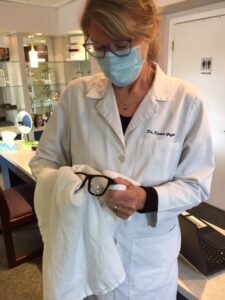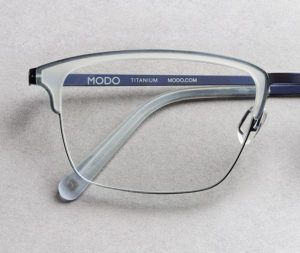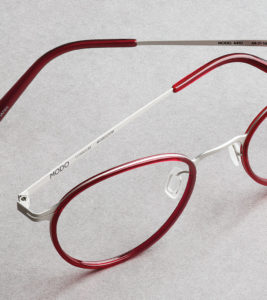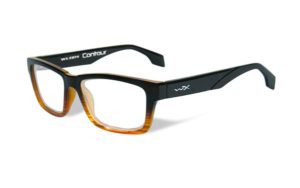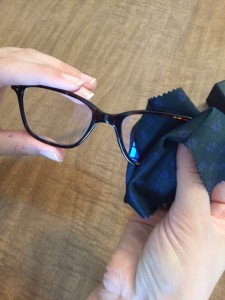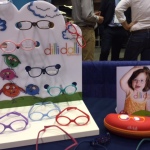Wearing a mask that covers your mouth and nose is required in public to protect other people in the vicinity. For many of us who wear glasses, we find ourselves in a fog.
Some techniques to minimize foggy lenses include a properly fitting mask. Your mask should fit snugly, especially across the bridge of your nose and below you eyes. Most masks contain a thin piece of metal that can be molded to fit the face. Double-sided tape can be used too. The exhaled air will escape out the bottom or the sides of the mask instead of upwards. Breathing downward will also push the warm/moist air away from your eyes and glasses.
Be cautious with products you apply to your glasses and lenses. At Westside Optometry we have always recommend the use of Dawn dish-washing solution and warm water. This will safely clean the frame and lenses. Residual soap film may reduce the fogginess of the lenses, too. Alcohol and sanitizing products may damage the lens coatings and the finish on the frame, especially with repeated use. You should be cleaning your glasses at least once a day, more if you have left your “shelter,” and increased your exposure to potential contamination.
We are back in the office doing eye exams and providing optical services. All visits are by appointment only so social distancing and proper hygiene can be maintained.
